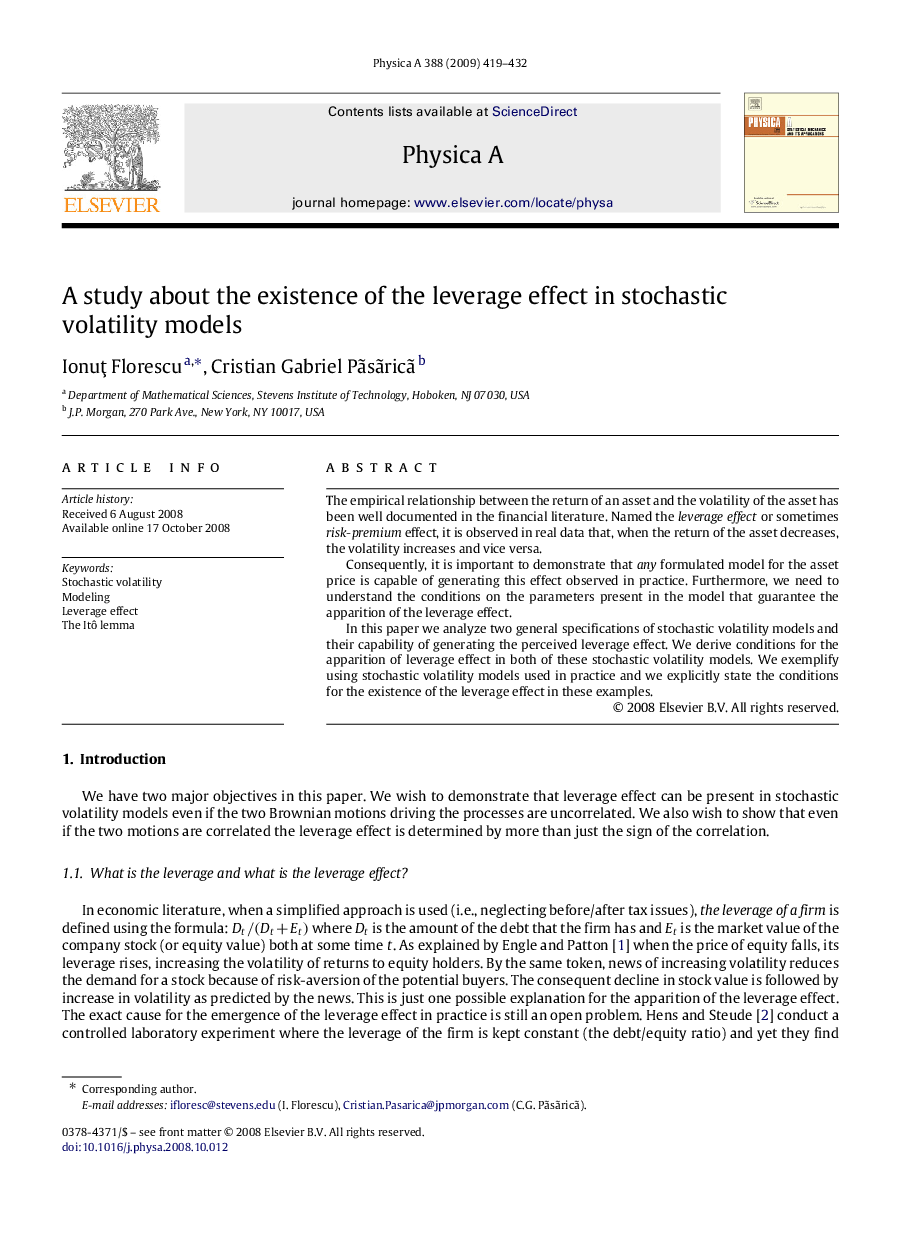| Article ID | Journal | Published Year | Pages | File Type |
|---|---|---|---|---|
| 977478 | Physica A: Statistical Mechanics and its Applications | 2009 | 14 Pages |
The empirical relationship between the return of an asset and the volatility of the asset has been well documented in the financial literature. Named the leverage effect or sometimes risk-premium effect, it is observed in real data that, when the return of the asset decreases, the volatility increases and vice versa.Consequently, it is important to demonstrate that any formulated model for the asset price is capable of generating this effect observed in practice. Furthermore, we need to understand the conditions on the parameters present in the model that guarantee the apparition of the leverage effect.In this paper we analyze two general specifications of stochastic volatility models and their capability of generating the perceived leverage effect. We derive conditions for the apparition of leverage effect in both of these stochastic volatility models. We exemplify using stochastic volatility models used in practice and we explicitly state the conditions for the existence of the leverage effect in these examples.
